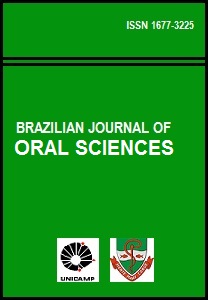Abstract
The selection of the mandibular major connector of a removable partial prosthesis depends on the distance between the floor of the mouth and free gingival margin, height of the lingual frenum, presence of mandibular tuberosity, mobility of anterior teeth, major connector used in a previous denture and patient’s opinion, slope and retentivity of alveolar bone. However, the dental technician rather than the dentist often selects the major connector in the cast model. Aim: To determine whether there is a difference between selecting the mandibular major connector clinically or in the cast model as determined by a conventional impression technique using alginate and a universal metallic tray. Methods: The sample was composed of 64 patients under treatment at the Department of Dentistry of the Federal University of Rio Grande do Norte. The distance between the floor of the mouth and the free gingival margin of the remaining elements was measured with a millimeter periodontal probe in the oral cavity and in the cast models. Results: The mean clinical distance between the free gingival margin and the floor of the mouth was 7.39 ± 2.13 mm, in contrast to the mean distance found in the models (9.03 ± 1.36). The Mann-Whitney test showed a significant difference (p < 0.001) between the two measures. Conclusions: For the adequate selection of the mandibular major connector, the distance between the gingival margin and the floor of the mouth must be measured clinically when using the conventional impression technique.The Brazilian Journal of Oral Sciences uses the Creative Commons license (CC), thus preserving the integrity of the articles in an open access environment.
Downloads
Download data is not yet available.

